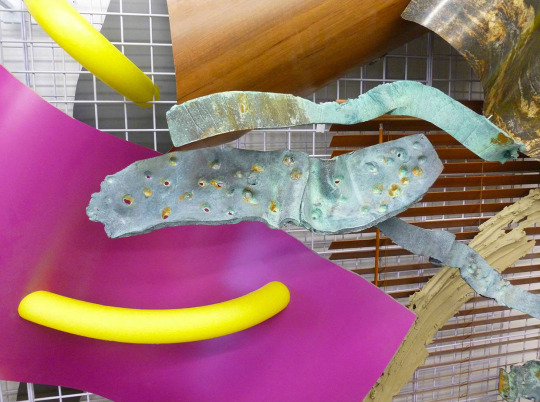Business of Art | Five Tips for Smarter (Not Harder) Fundraising
Follow these steps to make a strong impression on a tight schedule.
Say you’ve got a great idea for an art project, and you’re ready to make it happen. Projects of scale will inevitably need to be funded; how you cover the costs will be up to you. The vast world of funding includes: grantwriting, crowdfunding, individual donors, benefits and ticketed events, and in-kind contributions. While grantwriting will be just one tool in your toolkit, it’s an important one.
In this article, we’re sharing tips inspired by a recent workshop by The New York Foundation for the Arts (NYFA) in partnership with College Art Association (CAA) titled “Fundraising and Strategy: How to Work Smarter, Not Harder, on Grant Applications.” The workshop was part of a one-day program, “The Artist as Entrepreneur.” Presenters Peter Cobb, Senior Advisor, NYFA Learning; and Rebecca Guber, Founder and Director, Asylum Arts argue that fundraising will take up time, but it doesn’t need to overwhelm your day-to-day if you think strategically. The below advice is presented in the context of grant applications, but much of it can be applied to other fundraising methods.
Be Selective
Applying for as many grants as possible, without careful consideration of eligibility criteria and other factors, won’t lead to more funding. A strategic approach will reduce the time you spend crafting applications, while at the same time upping the probability that you’ll receive the ones for which you apply. It’s a win-win.
Essentially, fundraising involves a lot of matchmaking between your work and the funder. You need to understand the funder’s needs and goals. Cobb suggests asking yourself the following questions as you complete an application or proposal, and ensuring they match up with the funder’s mission:
- What do I do?
- What problem(s) do I solve?
- What needs do I address, and for whom?
A compelling application “makes it easy for the funder to make the connection,” says Cobb. If an organization supports emerging artists who tackle environmental issues, then you may not be the best fit if you’ve already received several prestigious awards and primarily address issues of gender in your work. But if climate change is central to your work and you would, in fact, describe yourself as emerging, then your time will be well spent in applying.
This matchmaking mindset applies to many aspects of the application itself. When setting the dollar amount for a funding request, the amount of funding requested for a project should feel proportionate to the funder. If they generally allot $40,000 for a project, don’t ask for $5,000. Conversely, if project grants from the organizations are $5,000 on average, don’t request $40,000. This is just one of the many ways to show that you’ve done your research, and to highlight the connections between the funder’s focus and the ins-and-outs of your project.
Build Relationships
Many funders are more approachable than you may think. If there is someone at the organization you can connect to—ideally the program manager or coordinator for the grant you’re interested in—do it. There are several ways to kickstart and cultivate this kind of relationship and to leverage your network, for introverted and extroverted artists alike.
- In a concise, respectful email, ask the program manager a real question you have about the grant. This question should show that you’ve read the guidelines well. Guber recommends adding: “Is there anything you would suggest to me, based on my question?”
- Connect to the program’s alumni or past grantees. A past grantee may even share their application with you, to help you infer what makes an application successful in this funder’s eyes. Even better if you happen to be close to a former grantee. That person is an ideal editor for your application.
- Many funders hold receptions and other events to celebrate their programs and awards. Attend these if possible to show your engagement with the organization’s work, and—again, respectfully—try to connect with staff in a genuine way at the event.
- Once you’ve established a working relationship with a funder’s representative and they’ve shown interest in your projects, send thoughtful, personalized invites for your events and ask if you can subscribe them to your newsletter.
In all communications, especially early on, maintain a degree of formality. “I hate reading ‘XOXO’” as a sign-off, laments Guber. If you’re unsure of the staffer’s gender identity, don’t guess. In this case, use the individual’s first and last name, or begin with a simple “Hello.”
Streamline Your Process
While each application is different, many opportunities will require you to submit some version of the following components:
- Cover Letter
- CV and/or Artist Bio
- Work Sample
- Project Description
- Artist Statement
- Budget
Do yourself a favor and prep a ready-to-go version, or versions, of these in advance. When a last-minute opportunity comes along, you’ll be grateful that your CV is complete, up-to-date, and typo-free.
Guber recognizes that many multidisciplinary or interdisciplinary artists struggle to describe their practices succinctly and concretely. If this sounds like you, create a few different versions of your Artist Statement in particular, of differing lengths (between 250-500 words), that focus on the different central aspects of your work. When you do need to bring these elements together in an application or Artist Statement, avoid writing a laundry list of the disciplines you work in. Instead, focus on your process, or themes, to create coherence.
Each application should feel tailored to a specific opportunity. But always remember to ask, “What can I steal from myself?” When possible, try to rework, rather than rewrite.

Make Your Application Pop
Panelists for an opportunity usually will need to review a large number of applications in a small amount of time. So you need to ensure that your application stands out from all the others. With a Project Description, for example, answer the “Who? What? When? Where?” in your first sentence. Then, get more specific and include memorable, unique details. Guber jokes that panelists will give your application a nickname for easy reference, so you want your application to be unique and clear enough so that it will stay front-of-mind for your panelists, even as they look at scores of other proposals.
A few additional tips:
- Use simple sentences and avoid jargon. “Jargon slows people’s brains down,” says Guber.
- Put your best work first in your Work Sample. If possible, find out what viewing system the panel will use.
- If a panelist really likes your work, they might look up your website even if it’s not part of the application. At least a few aspects of your website should correspond with your application. There should be some cohesion between your online presence and the way you present yourself in your application.
Keep Your Eyes on the Prize
Your application needs to present itself as a focused, cohesive package that will pique panelist interest from the outset. If your Work Sample includes video, make sure the first 30 seconds are attention-grabbing and to-the-point. Whatever media you work in, do your best to give the panelists a feel for the work.
If you push boundaries with your art and engage with themes of politics or sexuality, for example, Guber advises that you prepare your audience—in this case, the panelists. You never need to censure your work or water it down, but you can provide helpful context for it via your written materials or the title of your application. Guber suggests thinking, “How will this land on a human being?” and avoid assuming that everyone on a panel is on the same page as you. If you communicate clearly about your work, a difference of opinion shouldn’t get in the way.
In any application, you’re the authority on how you present yourself. With practice, strategic thinking, and feedback from trusted peers, you’ll be able to bring your work to life for a room full of panelists.
– Mirielle Clifford, Program Officer, Online Resources
The “Fundraising and Strategy: How to Work Smarter, Not Harder, on Grant Applications” panel was presented through NYFA Learning, which includes professional development for artists and arts administrators. Sign up for NYFA’s free bi-weekly newsletter to receive updates on future programs.
Images, from top: Tiffany Smith (Fellow in Interdisciplinary Work ’18), Sariah, Throned; Adam Smith (Fellow in Painting ’15)





